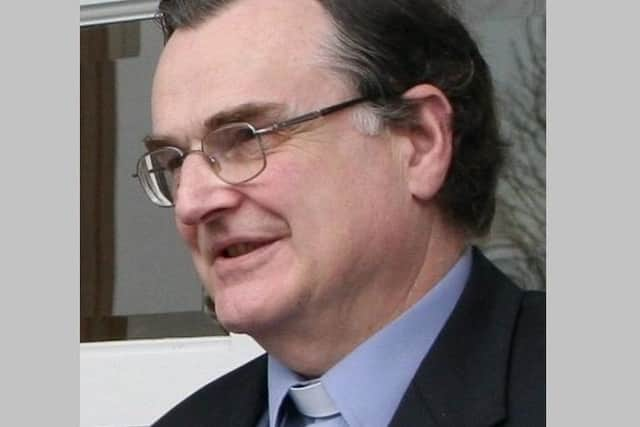Ian Ellis: Thirty years after the fall of the Berlin Wall much of the surge to the far right has been in East Germany


The date of the fall was November 9, 1989 but it did not just come out of nowhere.
There had be growing and open discontent in country’s east at the oppression by the communist state.
Advertisement
Hide AdAdvertisement
Hide AdThe tide of feeling had risen alongside the progressive leadership of Mikhail Gorbachev in the Soviet Union from 1985 and the emergence and increasing role in the 1980s of the Solidarity trade union in Poland, which was vocally independent of Poland’s communist government.


Already on November 4, 1989 a protest demonstration was held at East Berlin’s Alexanderplatz, attended by up to one million people.
Only in the previous month, East Germany had marked forty years since its foundation, but those ceremonies were held against a background of growing protest and the movement of many of its citizens to West Germany through Hungary and the West German embassies in Poland and the then Czechoslovakia.
It was all quickly getting out of control for the East German state.
Advertisement
Hide AdAdvertisement
Hide AdThe Alexanderplatz demonstration was in fact approved, which only illustrated how irresistible the freedom movement was.
When the Wall was breached, there were huge celebrations, with families and friends soon reunited.
However, the peaceful protest action was not confined to the capital.
In Leipzig the St Nicholas church (Nikolaikirche) had been a gathering place for events associated with the movement.
Advertisement
Hide AdAdvertisement
Hide AdThe World Council of Churches has pointed out that it had been the place where the ‘Monday demonstrations’ had taken place in 1989, “reaching a fever pitch before the Wall fell”.
That report continued: “Back in 1989, in Leipzig the Monday demonstrations had begun as prayers for peace, helping and comforting opponents of the East German regime and its Stasi secret police. East Germany had 17 million people and the state security apparatus had almost 100,000 official full-time employees and twice as many unofficial or informal informers, working for the secret police. The prayers in the Nikolaikirche led to a protest movement with calls for letting-up on severe government restrictions on freedom of movement and the press.”
It was also recorded that the security forces tried to intimidate Lutheran pastors Christoph Wonneberger and Christian Führer who had led the protests, but that those efforts had not halted them.
The reunification of Germany came in the year after the Wall fell, 1990. The result was massive investment in the new territory to the east which was so underdeveloped compared to the western part of the country.
Advertisement
Hide AdAdvertisement
Hide AdHowever, despite this investment and the improved living standards, quite apart from the gaining of freedom itself, many citizens of the former East Germany have objected to the ways in which large corporations have concentrated most of the heavy industry to the west.
Unemployment in the eastern region remains relatively high with young people seeking work typically moving west.
It is in this old East German territory that the far right has been most successful. In recent regional elections in the east of the country, the strongly anti-immigrant Alternative for Germany (AfD) party had strong showings, coming second in Saxony and Thuringia and gaining over a quarter of the votes in Brandenburg.
In fact, the eastern city of Dresden recently declared a ‘Nazi emergency’ on account of the activities of the far right in the city.
Advertisement
Hide AdAdvertisement
Hide AdChancellor Angela Merkel, who comes from the eastern part of the country, has by contrast wanted to show Germany to be open to taking in refugees and migrants.
She told the influential Der Spiegel news magazine at the beginning of this month that there is no right to hatred and contempt for other people, let alone violence.
Mrs Merkel is coming to the end of her time as Chancellor since 2005.
The Bishop of Leeds, Nick Baines, with whom I have worked on a British-German church body, and who is particularly knowledgeable about German affairs, has commented in a recent lecture that “Germany is now struggling with the end of the Merkel generation, appears unable to find a successful transition, whilst being challenged by a right-wing nationalist movement that is growing in confidence”.
Advertisement
Hide AdAdvertisement
Hide AdHe observed that the surge to the far right might not last but is “worrying for many Germans whose memory of the early twentieth century is still raw”.
Bishop Baines said that Mrs Merkel’s welcoming of North African migrants into Germany had demonstrated “firm moral integrity and purpose” but had legitimised a growing resentment in Germany about the country’s direction.
He added that this in turn was fed by a similar phenomenon to that in Brexit Britain, including a sense that local identity was being “diluted by intrusion”.
We wonder what Brexit, if it happens, may bring for Northern Ireland and the wider UK. However, what the future holds for Europe as a whole has not looked as uncertain for a long time.
• Canon Ian Ellis is a former editor of The Church of Ireland Gazette